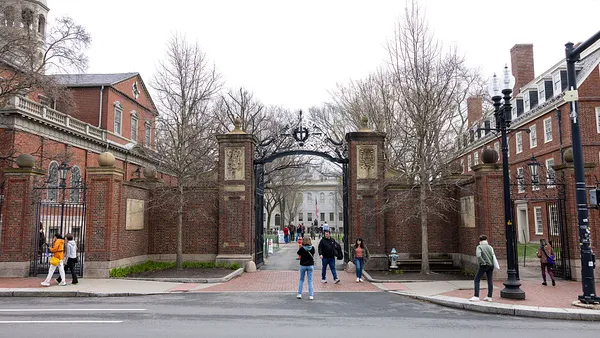Dive Brief:
- Although they can be "great equalizers," nearly all state flagship institutions are unaffordable to low- and middle-income students, according to a new analysis that found "enormous" affordability gaps for all but the wealthiest learners.
- The report, from the Institute for Higher Education Policy (IHEP), examined each institution's net price as well as the tactics it uses to help students cover costs.
- Although most states spend less on higher education than they did a decade ago, the researchers emphasized that colleges' strategies to overcome the shortfall should not reduce access for low-income students.
Dive Insight:
Flagships tend to be the best-resourced and the most academically rigorous and selective public college option in their states, the researchers note, and they have the imperative to be accessible to all residents.
"In order to follow through on that promise, (flagships) need to make sure resources are devoted toward low-income students who need financial support in order to access college," said Mamie Voight, IHEP's vice president of policy research and a co-author of the report.
State funding for higher education fell an average of 16% per student from 2008 to 2018, according to an analysis by the Center on Budget and Policy Priorities. Just four states spent more on higher ed in 2018 than they did in 2008.
In its report, IHEP notes that states' contribution to per-student costs dropped from 71% to 54% since 2000, while the share picked up by students and their families rose from 29% to 46%.
The shift is putting pressure on colleges to reduce students' costs.
One way colleges are making up for the cuts is by targeting higher-income students who can pay more tuition, and often they hail from out of state. One study earlier this year found that is particularly true for universities with lower levels of state support.
To attract more students, flagships in 46 states increased non-need-based aid by 65% in the five-year period ending in 2017-18 while need-based aid rose by 53% during that time, according to a recent analysis by Bloomberg Government.
Although colleges are making strides in reaching low-income students, the IHEP report notes that the most affordable institutions for low-income students tend to enroll the fewest of them.
Voight pointed to institutions' other enrollment and retention policies that could limit access for low-income students. Those include early decision policies requiring students to commit to a college without being able to compare financial aid packages and prioritizing applicants who have demonstrated an interested in the college, because low-income students may not have the resources to make a campus visit or attend an information session.
Tactics to reach this group include lowering sticker prices, adding more grant aid and providing free tuition to students under a certain income threshold.
Last year, the University of Illinois at Urbana-Champaign announced it would waive tuition and fees for qualifying state residents with family incomes at or below the state median. And the University of Texas at Austin and the University of Tennessee recently announced similar offers.
The IHEP researchers make several policy recommendations for improving access to flagships. They include:
- Providing aid to cover non-tuition expenses.
- Incentivizing institutions to recruit low-income students, such as by enhancing FAFSA support and subsidizing the cost of standardized tests at the state level.
- Increasing federal support for higher education.














